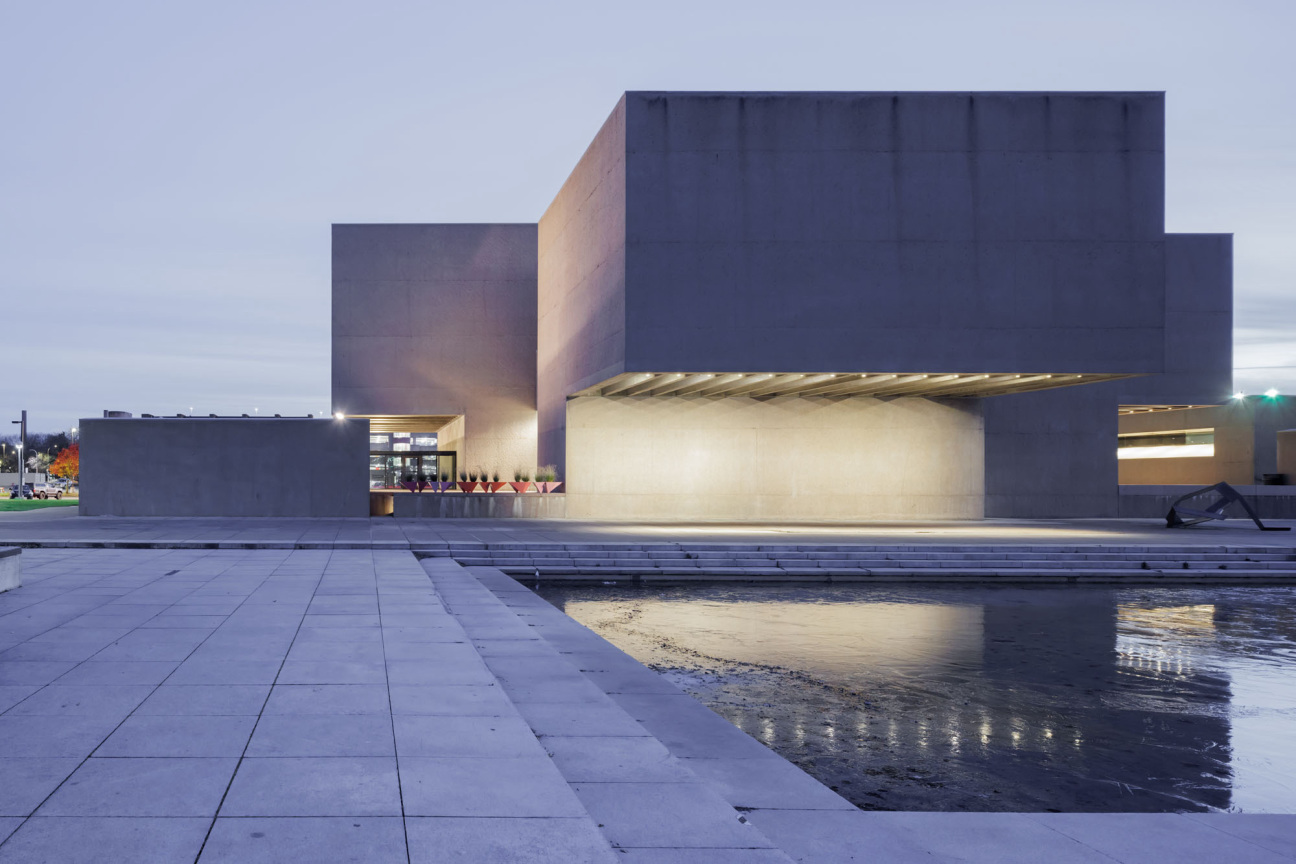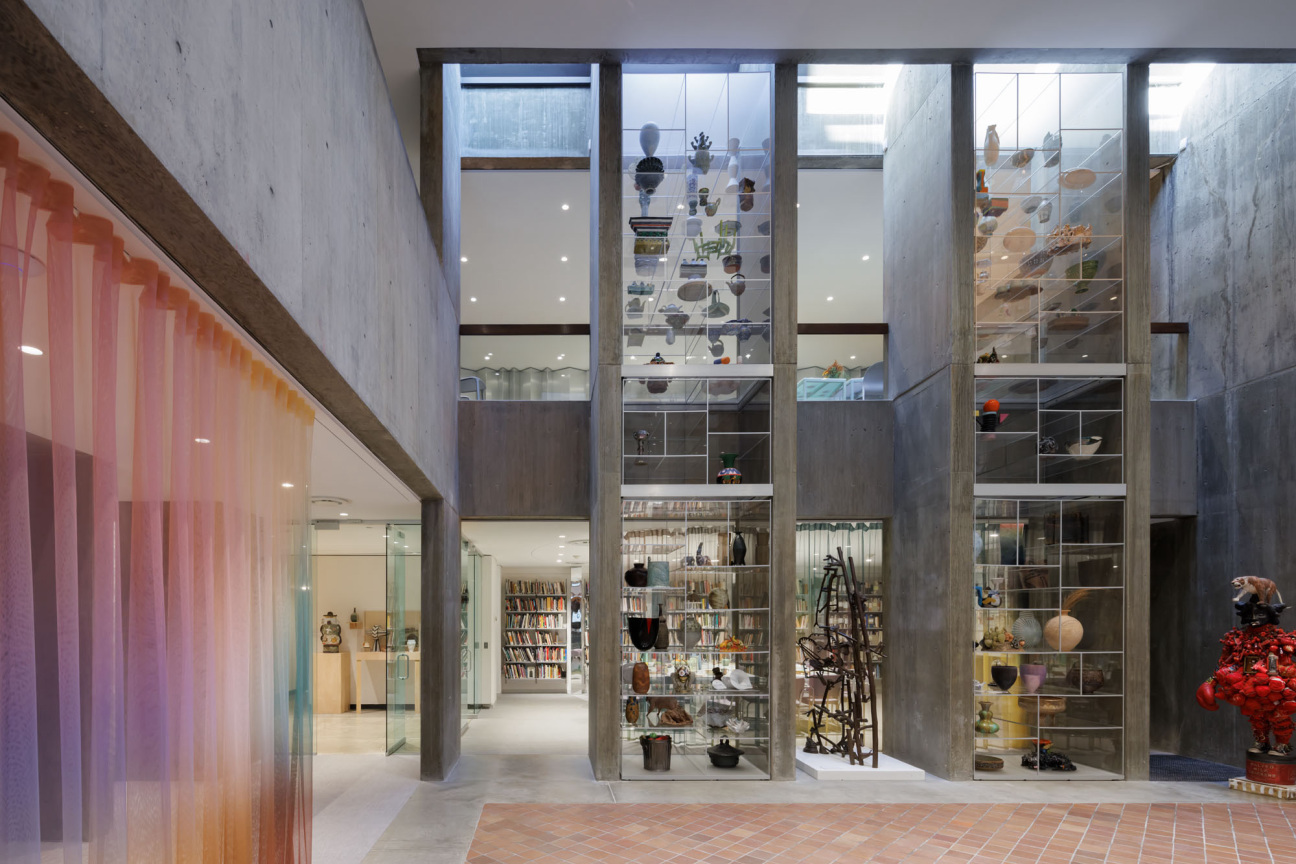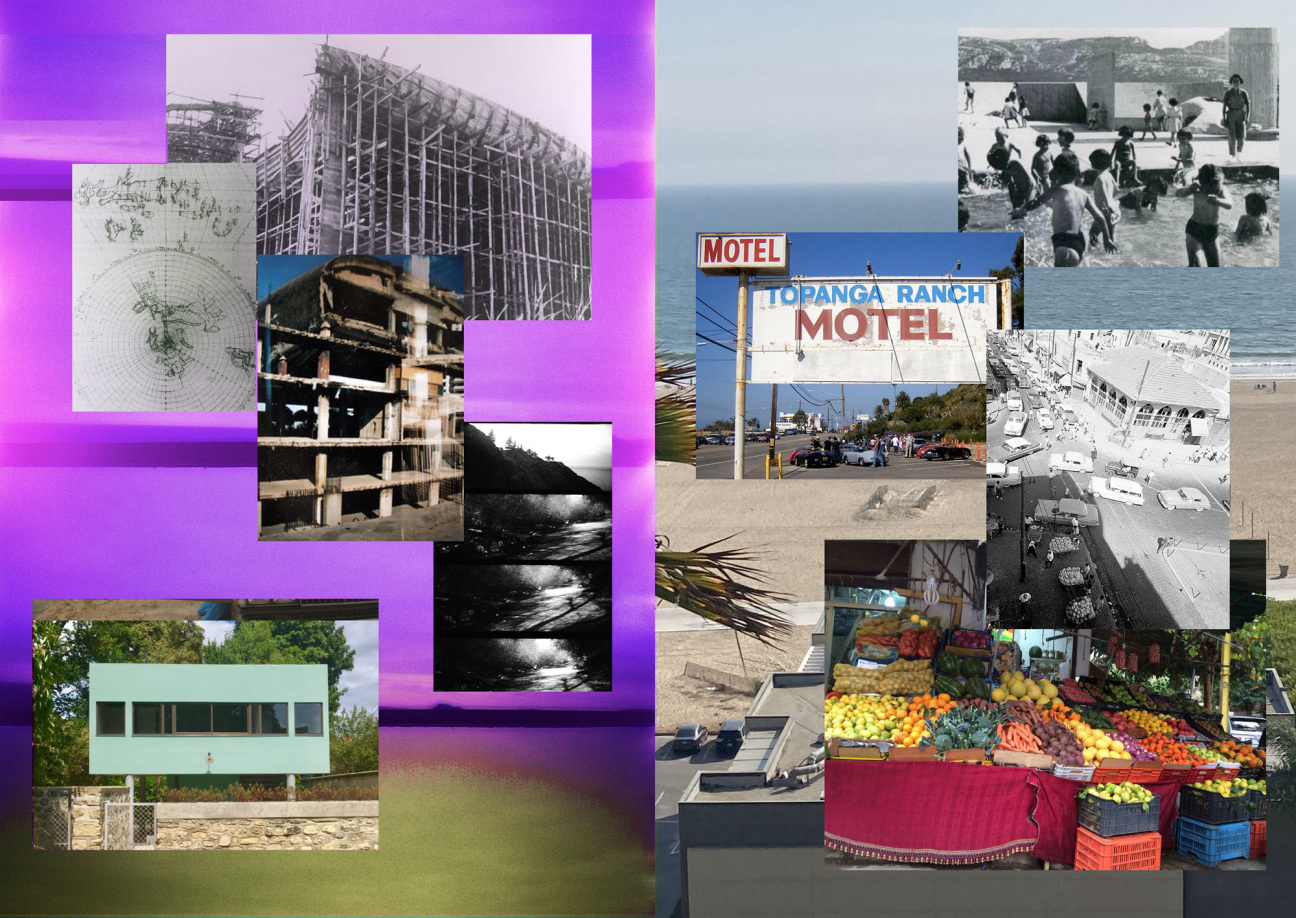
CULTURED’s monthly column, Spatial Awareness, is meant to pull back the curtain (just a little) on some of the most original voices working in architecture today.
Don’t let anyone tell you that browsing the Internet is unproductive. Before it evolved into a rising architectural studio, MILLIØNS was a web-based archive of inspiring cultural content assembled by Zeina Koreitem and John May. Hatched in 2012 as Millions of Moving Parts, the hub for byte-size images, videos, and buildings offered the duo an escape from academia and an outlet for broader intellectual pursuits. In the ensuing years, the two shortened the initiative’s moniker to Millions (replacing the o with an ø for web search ease), got married, and established an under-the-radar studio practice based in LA and Topanga that they continue to balance with their faculty positions.
This summer, MILLIØNS opened its first museum commission, a reimagining of the east wing of the Everson Museum of Art in Syracuse, New York. The duo has sensitively updated the Brutalist building originally designed by I. M. Pei (who died in 2019 and is receiving a well-deserved retrospective at Hong Kong’s M+ museum). Over the course of the five-year project, Koreitem and May collaborated with the museum’s forward-thinking trustee, Louise Rosenfield, to creatively incorporate her trove of 4,000 into the design—not just as objects of display, but also of utility in the museum’s cafe. The clever insertion of two glass towers presenting dozens of vessels between Pei’s concrete structure brings lightness into a formerly brooding space. It also addresses the never-ending problem of how to store and exhibit artwork simultaneously.
MILLIØNS’s design philosophy is shaped in part by the nomadic life of its cofounder, Beirut-born Zeina Koreitem. As a child, she and her family survived civil conflict, two Persian Gulf Wars, and the 2006 Israel-Hezbollah War. “I remember those moments being transient and fleeting, that we had to adapt often and leave things behind,” she recalls. Living and working on multiple continents as a displaced global citizen, Koreitem is finally putting down roots in the Santa Monica Mountains.
She and May, who now have a toddler in tow, are eager to finish their own residential project, which they began several years ago. The retrofitted home takes advantage of boulders on the property, utilizing them for retaining walls. Mixing ancient wisdom with contemporary technology, the couple is leaning into the Mediterranean climate cycles in Topanga, devising both a summer living room and a winter living room—a built-in seasonality and nomadism that takes advantage of the house’s thermal massing.

Over the past several years, the exploration and intersection of personal, professional, and political identity has become a priority for Koreitem. Students and young architects are eager to hear her childhood stories while the Everson Museum project has invited a new level of industry attention. MILLIØNS’s interest in interrogating the architect’s role led to a guest-editing gig with friend Sean Canty for the vaunted Harvard Design Magazine. The crux of the issue was the concept of “multihyphenation.” The trio argues that contemporary practitioners embrace a version of multiplicity embodied by the late architect-designer-DJ-curator-artist-dad Virgil Abloh, upending the increasingly unfashionable notion of a single auteur.
Closer to home, Koreitem is thinking carefully about the nomenclature surrounding husband-and-wife partnerships, including Ray and Charles Eames, the latter of whom made a point to use the words “we, ours, and us” when describing the design process. Being a duo involves a shift away from the starchitect mentality. “Architecture has never been a solitary activity, and some of today’s most vital practices prove that fact,” Koreitem says, citing couple-led studios MOS, SO-IL, and Johnston Marklee as well as the collaborative international studio RCR Arquitectes. “On the surface, a partnership is a legal agreement, and for some, that’s maybe all it ever is. But for our practice and many I admire, it’s much more: it’s life. It’s risky, it’s messy, and it’s nearly impossible to articulate.”

IN HER OWN WORDS
What was your favorite toy growing up?
During the summer months, we visited family in Sawfar, a mountainous village east of Beirut. I loved playing in our neighbors’ orchard picking mulberry, grapes, and apples. I remember making up botanical experiments with my cousins.
Whose house would you live in (real or fictional) and why?
I was born in Beirut but my parents left for Kuwait during the civil war. During the first Iraq War, we fled again and lived with my paternal grandmother in the neighborhood of Sanayeh, Beirut. I spent many hours playing on her balcony. I watched my grandmother have lengthy conversations with her neighbors, balcony to balcony. She would even shop for seasonal produce by lowering a straw basket down to the street on a rope. The balcony had a tremendous impact on our domestic and communal life. I later learned that it is the core of the Beiruti Central-hall plan typology. This typology emerged in the mid-19th century during the cultural revival of the Arab Enlightenment “Al Nahda.”
There is certainly a nostalgic sentiment here, a longing for some kind of idealized version of Beirut. For better or worse, living in a Beiruti Central-Hall house would be a dream. There is a public side—the balcony with floor-to-ceiling triple-arched windows—and two private wings (bedrooms and service spaces). The central hall is where living and dining happens. I like these extremes. To me, it is the epitome of communality, sunlight, and fresh air.

What is your go-to uniform when you’re powering through a project?
Always coveralls or a jumpsuit. Especially when I am at our workshop in Topanga Canyon.
Who chooses the playlist in your studio?
Studio rule number one: There should always be music playing. Studio rule number two: Earphones are frowned upon. My very first collaboration with John was on a MIDI Controller! We both play instruments and are very particular about our music selection. So the short answer is: We both do.
What’s a trend in architecture you wish would die out?
This obsession with the architectural “genius” (often male-centric). This trend is at least a century old and spans many cultures.

What is one detail of a structure that most people wouldn’t notice, but that you always look to for insight?
We like to experiment with that outermost layer of a material. Various processes of painting, sanding, and sealing tend to be seen as superficial or secondary to form. It’s not just about color—it’s also about the properties around color like brilliance, contrast, roughness, saturation, and reflection.
Are there any analog materials you return to despite the prevalence of new technologies?
I never think of my work as analog; everything is always conceived with computational processes. Perhaps the most analog thing we do is cast and test different types of aggregates and alternatives to concrete. We’ve worked with hempcrete and currently are building gabion walls for a residential retrofit project in Topanga.
What is the most progressive architectural city you’ve visited?
I have lived and worked on many continents, seeking stability and a vague notion of liberation. There is no perfect city and no one definition of a progressive place. The “West” claimed to be “progressive” for a century but racism, socio-economic failures, Islamophobia, and toxic prejudice prevail. Cities in the Global South that are perceived as oppressive in the eyes of the “West” have social bonds and communal traditions that are more meaningful and reliable than Modernity’s principles. Empires rise and fall but what matters in the end is community, empathy, and knowledge.
What is your last source of inspiration that surprised you?
I always have a million references and books on my desk and desktop. But I am currently obsessed with Poem of Nine Verses by Saloua Raouda Choucair.










 in your life?
in your life?

